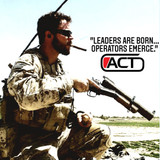Improvised Weapons: Plan Ahead, Be Prepared

Bob Campbell - 03/20/2021

Improvised weapons can best be explained as objects one has on hand. These may not be designed for the purpose of personal defense but, in the moment, can be used in this capacity. When a firearm can’t be deployed or a threat doesn’t demand lethal force, an improvised weapon can be a lifesaver.
How to Choose an Improvised Weapon
The best improvised weapon is something that can be carried every day so that the defender can have some practice and forethought in deploying the tool. In such a desperate situation, the primary goal is escape. But defeating the adversary is also important if he or she is aggressively attempting to take your life or do bodily harm.
Keys

A tactical pen may be a useful last-ditch weapon, but a car key not so much.
Despite common corporate “security” classes, I don’t think keys are useful as a self-defense tool. A blow to the eyes may discourage an assailant, aiding in escape, but it is also likely to enrage him or her. If keys are the only option, it is best to close the fist around one key, with the sharp edge protruding from the pinky side. Then poke and slash at the attacker. (Do not try to embrace your inner “Wolverine” with keys between your fingers. This could cause a great amount of damage to your hand.)
However, it is best to ward off an attack before it gets within reach of your keys.
Belts
A weapon that seems out of style these days was once pretty common in beer joint dust-ups. A brawler would rip his belt out of its loops, wrap the leather around his hands and swing the belt buckle at another’s head. Of course, if the belt lands about midway in the loops, it doesn’t do much damage (and the other man may grab it). But if the swing is timed correctly and the buckle lands on the intended’s face, severe damage is possible. Using a belt also allows one to put some space between himself or herself and the attacker.

A belt may be a formidable weapon if properly used.
Objects On-Hand
Whatever you deploy in an emergency, the object should have enough mass to strike a heavy blow. Make it a habit to look around when you enter a space. It’s a good idea to know where all of the exits are as well as what can be thrown or used as a bludgeon in a worst-case scenario.
In some cultures, shoes are thrown in anger. But a boot with a substantial heel delivered to an adversary’s foot can do considerable damage. A fellow officer spent months recovering from an injury to his foot when a female shoplifter brought her high-heeled shoe down on the top of his foot. Small bones in the foot are easily broken.
A tactical pen falls somewhere between an improvised weapon and everyday carry gear. Part writing instrument and part Kubotan, such a pen is typically heavy and sturdily made. If properly used in targeting pressure points, it can also create pain compliance. Another often carried item, a flashlight, makes a good blunt-force multiplier.
A fire extinguisher may be used to disorient an attacker. The fine spray is effective if it’s sprayed into the face, allowing you time to flee. As an impact weapon swung forcefully on a pivot, the device has merit as well.
How to Use Weaponized Objects
No matter the improvised weapon used, you should be certain to employ basic defense skills in wielding it. It is ridiculously easy to disarm someone who doesn’t maintain a firm grip and leverage on the object.

This walking stick was handcrafted by the author’s family. Maj. Matthew Campbell designed this walking stick, which is quite versatile.
For example, a walking stick could be used as a weapon. But if you don’t make use of leverage, it can easily be taken away. While an advantage of holding the stick near its base and swinging it is reach, the threat has more leverage than you do if he or she is able to grasp the stick. Holding a stick in the center allows you greater stability and the added advantage of being able to strike with both ends of it. Similarly, a baseball bat offers bone-crippling energy if you swing it properly.
A rule to follow though is to never strike above the neck unless you are facing a clearly lethal threat. Another thing to keep in mind is that an intruder may well make use or your walking stick, ball bat or golf club if the tool is left lying about the house.
There are many objects in near reach that may be used as weapons or for defense. Keep your eyes open, plan ahead and consider every possibility. Don’t neglect defensive measures.
About Bob Campbell
Bob Campbell is a writer for Concealed Carry Magazine with a degree in criminal justice. Bob has been a firearms writer for decades, writing for Concealed Carry Handguns, Gun Tests, American Gunsmith, SWAT Magazine, Law and Order and Black Belt, among others. He has written 15 books primarily focused on handguns and training, including The Accurate Handgun from Gun Digest. In addition to serving as a peace officer and firearms instructor, he has also written curriculum at the university level.
What to do next…
- Download our free guide “6 Things You Didn’t Know Would Happen When the Police Arrive” to ensure you’re prepared if you ever need to use your firearm for self-defense.
- Learn more about the USCCA and how we can make sure you have the skills, knowledge, and support to protect you and your family if you’re ever forced to defend yourself.
Discover why more than 500,000 people trust the USCCA as their source for firearms education and training.
